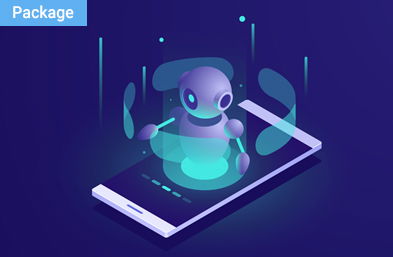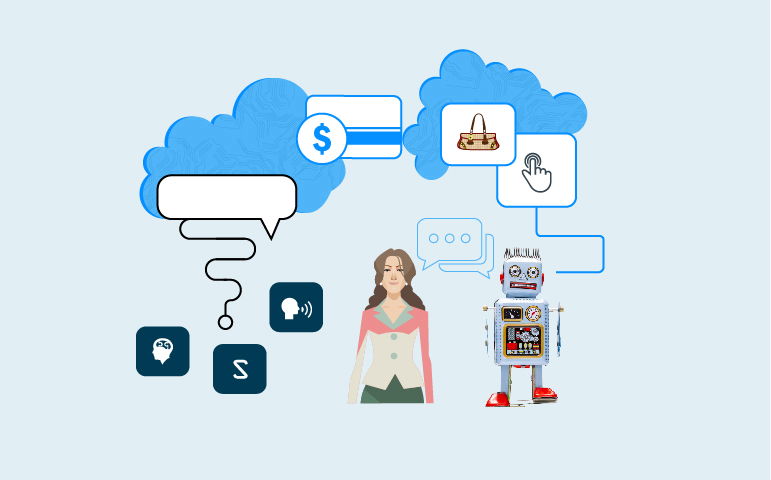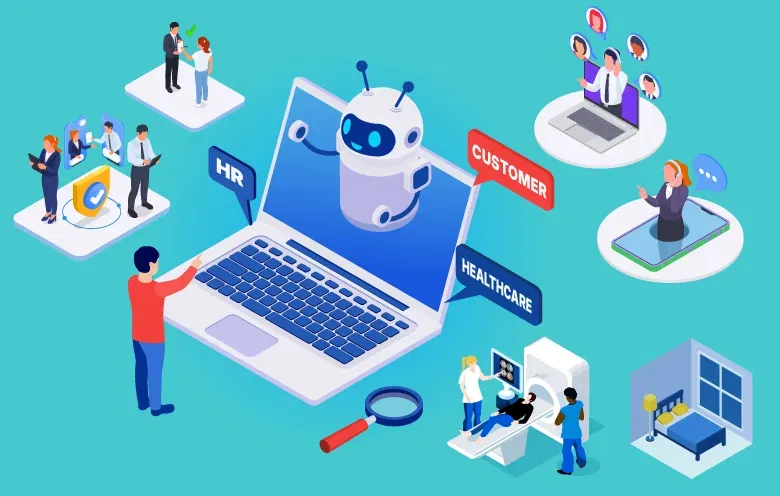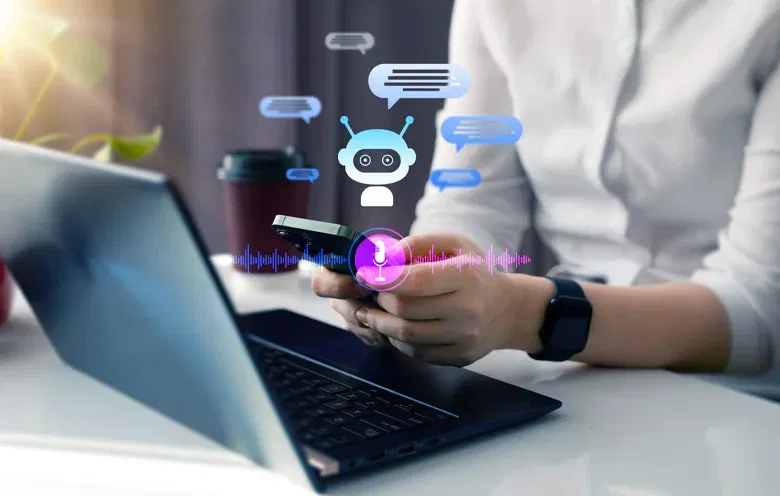There are myriad of chatbots out in the market these days, however, every bot is not intelligent. Just like us, chatbots also vary in their ability to understand, engage, and assist customers. A dumb chatbot can end up frustrating your customers and your business will suffer lost sales opportunities, poor brand association, and missed customers.

AI-BASED CHATBOT IMPLEMENTATION STRATEGY
Softweb’s AI-based bot implementation strategy is specifically designed to help companies understand how to build and deploy intelligent chatbots.
Hence, it’s no point building a bot that is too basic and lacks advanced AI or natural language processing abilities. Moreover, considering advancements in technology and chatbot usage, now retailers must develop intelligent chatbots with a blend of cognitive capabilities and machine learning.
By integrating a natural language interface to websites, apps, or to messaging channels, bots can break the barriers to quick and efficient customer experience.
By 2020, consumers will manage 85% of their relationships with enterprises without ever interacting with a human, with all of their interactions being dealt with by some form of AI. – Gartner
Chatbot with Computer Vision – Gain high-level understanding from digital videos and images
With the Computer Vision API from Microsoft, the chatbot can understand everything from faces to feelings in images as well as videos. If you integrate Computer Vision API with your chatbot, it can transform the way your customers’ interact with videos and photos on your eStore, which will provide you with valuable and profound information about their preferences. The chatbot will recognize the visual content from images and identify relevant products as per the user’s need.
For example:
You can open your Facebook Messenger, take a photo of your friend’s shades and post it to the thread of your favorite eStore (UCB or ASOS). Immediately, before you close FB Messenger, you will receive a reply from the bot that it has identified the shades from its database. It will also show the cost and a “buy now” button directly in the application.
Chatbot with LUIS – Interact with customers in a very human-like way
Nowadays, a lot of retailers are showing interest in making chatbots that combine voice-based UI and visual UI to showcase product images or options. This will give buyers a more natural, conversational, and concierge-like experience in supporting them with their purchases. This is where Microsoft’s LUIS comes in.
LUIS is based on three tenets:
- Utterance: A chat or voice message expressed by a person
- Intent: What is the intent of the person who sent this message?
- Entity: What business entity is the message about?
This is why LUIS is considered to be an amazing tool that can drive free-form conversational bots – designed to interpret the intent of a user’s conversation. If you integrate LUIS in your chatbot, you can derive a user’s intent from a dialog and help your customers to find out what they are searching for.
The variety of search phrases and utterances can be something similar to these;
- New movie releases DVDs please
- Thai cuisine recipe books
- Nordstrom rack’s latest collection
- Marks & Spencer chain in my neighborhood
Chatbot with ML increases analytical capabilities and performance
Basically, ML is nothing more than applying advanced analytics with the aim of automating tasks and achieving better results through a self-learning process.
eCommerce chatbots combined with Machine Learning makes them more realistic, offers visual impact, and voice commands to improve customer experience. The chatbot will gradually learn the buying pattern and behavior of customers, inventory, clicks, conversion rates, and more. This way the chatbot can then make out what the customer is searching for and serve them accordingly. Also, the bot can recommend products to shoppers based on their purchase history and preferences.
For example, if you are browsing through a store’s visual menu and ask a chatbot to show you options for men’s blue t-shirt with long sleeves, you will get to see some options as mentioned. From there, you can refine the search further, by typing in or speaking that you want only t-shirts with a pocket, and you keep refining the search until you find that single product. The bot can then inform you if there is stock available in your size, along with an item code, so that you can then be navigated to the right product to try and buy, or if in case it’s not available, you can be presented with similar options, or be directed to an ordering page.
The final say
There a lot of new ways of brand-to-consumer communication and interactions evolving in eCommerce with evolving platforms and technologies. Some of them may be successful and some of them may be a failure, however, there is no doubt about the fact that consumers, as well as brands, benefit from more of these smart points of contact underpinned by next-generation technologies. To get an intelligent chatbot developed for your eCommerce business, you can always get in touch with our expert team of bot developers.



